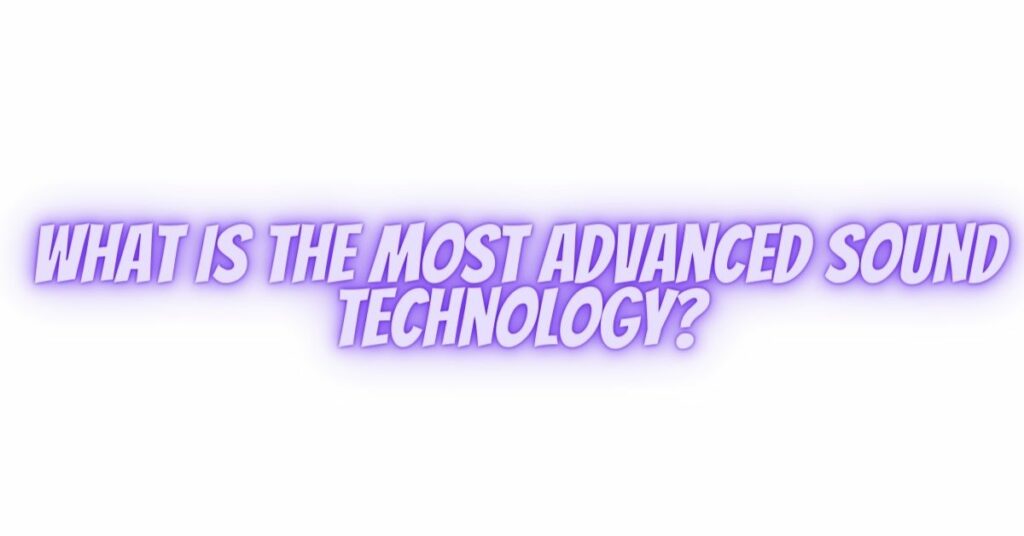Sound technology has evolved exponentially over the years, transforming the way we experience and interact with sound in various contexts, from music and entertainment to communication and science. As technology continues to advance, new breakthroughs in sound-related fields push the boundaries of what’s possible. In this article, we will explore some of the most advanced sound technologies across different domains.
- Immersive Audio and Spatial Sound
Immersive audio technologies have revolutionized the way we experience sound in various entertainment media, from movies and video games to virtual reality (VR) experiences. Spatial sound systems, like Dolby Atmos and DTS:X, create a three-dimensional audio environment by placing sound objects in a 360-degree space. These technologies use an array of speakers and advanced algorithms to precisely position sounds above, below, and around the listener, providing a truly immersive auditory experience.
- Acoustic Levitation
Acoustic levitation is a cutting-edge technology that uses high-frequency sound waves to suspend and manipulate objects in mid-air. Researchers and engineers are exploring its applications in various fields, including materials science, pharmaceuticals, and even the manipulation of small biological samples. Acoustic levitation offers a non-contact, precise method for handling delicate objects without physical contact.
- Binaural Audio and 3D Sound Recording
Binaural audio technology captures sound using two microphones placed in the same positions as human ears. When played back through headphones, binaural recordings create an incredibly realistic and immersive auditory experience. This technology is widely used in ASMR (Autonomous Sensory Meridian Response) content, virtual tours, and live streaming, providing an uncanny sense of “being there.”
- Active Noise-Canceling (ANC) Headphones
ANC headphones use advanced algorithms and microphones to analyze and cancel out external sounds, allowing users to enjoy audio content in a quieter environment. These headphones are invaluable for travelers, commuters, and anyone looking to focus in noisy surroundings. Recent advancements have improved ANC technology, providing even better noise reduction and sound quality.
- Wave Field Synthesis
Wave Field Synthesis (WFS) is an advanced sound reproduction technique that creates a truly immersive auditory experience by generating sound waves from a multitude of closely spaced speakers. This technology is often used in specialized installations and research settings, such as concert halls and acoustic laboratories. WFS can precisely control the direction, intensity, and timing of sound, resulting in highly realistic soundscapes.
- Speech Synthesis and Voice Assistants
Natural language processing and speech synthesis technologies have reached new heights with the development of advanced voice assistants like Siri, Google Assistant, and Amazon Alexa. These systems can understand and respond to spoken language, making them integral to smart homes, virtual assistants, and accessibility features for individuals with disabilities.
- Holographic Audio
Holographic audio technology aims to create an immersive 3D audio experience that replicates the way humans perceive sound in the real world. By simulating sound sources and their interactions with the environment, holographic audio systems enhance spatial awareness and immersion in virtual environments, making it a valuable tool for gaming, VR, and augmented reality (AR) applications.
Conclusion
The world of sound technology is in a constant state of innovation and advancement. From immersive audio experiences and acoustic levitation to speech synthesis and holographic audio, these technologies are reshaping how we perceive, interact with, and manipulate sound. As research and development continue to push the boundaries of what’s possible, the future of sound technology holds exciting possibilities for entertainment, science, communication, and beyond. As these technologies become more accessible and integrated into our daily lives, they will continue to enrich and transform the way we experience the world of sound.

